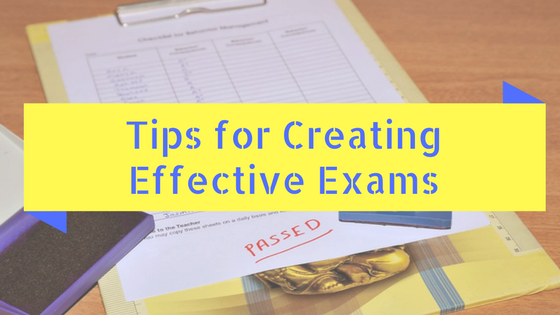
One of the biggest tasks of an adjunct professor is creating effective examinations to administer in courses. Examinations should follow the rules of reliability, validity, and fairness (for more on these qualities of effective assessments, check out our blog post here). In the jargon of assessment experts, what we frequently refer to as “questions” are called “items” to avoid confusion, as not all that is tested on an exam is represented through questions.
One major type of item on an examination is a true or false item. A true/false item tests the students’ knowledge of the truth of a declarative statement. True/false items are best used to test comprehension or basic facts that were taught in the course. True/false items should also be kept concise and focused on a single issue, as adding unnecessary detail or caveats can make it difficult to ascertain if students actually didn’t know the material or if they just misunderstood the question. In addition, professors should construct true items so that they are completely true and false items so that they are completely false. Finally, when using a negative word like not, no, or never, be sure to italicize or underline it to draw the student’s attention to the negation.
Another common item found on examinations are matching items. Matching exercises usually employ two vertical lists: a left one which is preceded by numbers, and a right one which is preceded by letters. Students should enter the correct letter of the corresponding item next to the numbered item. A key for writing matching items is to make sure that none of the definitions could match two terms. In addition, put the descriptors, which are definitions or defining phrases, in the right-hand column and designate them with letters. On the other hand, put the vocabulary word or item in the left-hand column and designate them with numbers. Be sure to give a clear space for students to write their answers, and state the directions clearly at the top of the exercise.
Finally, multiple-choice items can allow professors to turn around test results quickly to a large number of students. While frequently criticized, multiple-choice items that are well-constructed can be valid, reliable, and free of bias in ways that measure student learning. Multiple-choice items should test facts, not opinions, and each question should have four or five possible responses. Within the responses, professors should include distractors (false answers) that are plausible responses rather than clear throwaways. Also take care to avoid clangers like having only one answer whose verb correctly agrees with the subject in the question, or one answer that begins with a vowel when the last word of the stem is “an.” These indicate to students which is the correct answer.

